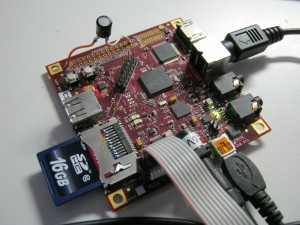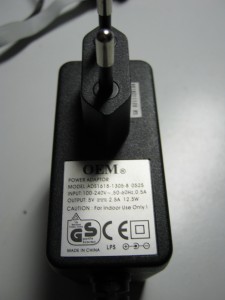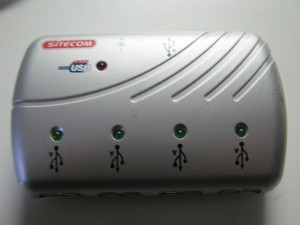I know, I have written about this before, but, here it is again. Installing ArchLinuxARM on the BeagleBoard, this time, taking a fresh SD card, and now it works like a sunshine. Yesterday, on the 8 GB card, I’d done exactly the same, without any result.
So, let’s see how to install the January 2013 ArchLinux OMAP3 rootfs to an SD card for use with a BeagleBoard.
Download the bootloader http://archlinuxarm.org/os/omap/BeagleBoard-bootloader.tar.gz
Download the rootfs http://archlinuxarm.org/os/ArchLinuxARM-omap-smp-latest.tar.gz
This says the latest rootfs, which would usually be the right thing to do. But to ensure you’re using the same rootfs as I do, you can use http://os.archlinuxarm.org/os/omap/ArchLinuxARM-2013.01-omap-smp-rootfs.tar.gz in stead.
extract the bootloader tarball. This tarball contains a mkcard.sh script which will partition the card for you. As I’ve had problems with the instructions on the ArchLinuxARM site last time, I will use this script instead, as it worked perfectly.
[root@hplaptop bootloader]# ./mkcard.sh /dev/mmcblk0
1024+0 records in
1024+0 records out
1048576 bytes (1.0 MB) copied, 1.13529 s, 924 kB/s
DISK SIZE - 16130244608 bytes
CYLINDERS - 1961
Checking that no-one is using this disk right now ...
OKDisk /dev/mmcblk0: 1961 cylinders, 255 heads, 63 sectors/track
sfdisk: /dev/mmcblk0: unrecognized partition table type
Please note it also says
./mkcard.sh: line 37: kpartx: command not found
But this ain’t a fatal error. It seems this is a tool to re-read the partition table and create device maps. However, it seems it works without on my system. Anyhow, let’s continue. The said script only partitions the SD card and creates file systems, but nothing else. (unlike the script for the CubieBoard, which I will discuss later)
[root@hplaptop bootloader]# mount /dev/mmcblk0p1 /mnt/a
[root@hplaptop bootloader]# cp MLO /mnt/a
[root@hplaptop bootloader]# cp u-boot.bin /mnt/a
[root@hplaptop bootloader]# cp uEnv.txt /mnt/a
[root@hplaptop bootloader]# mount /dev/mmcblk0p2 /mnt/b
[root@hplaptop bootloader]# cd /mnt/b
[root@hplaptop b]# tar -xvf /run/media/andre/DataBlaat/arm/beagleboard/archlinux/ArchLinuxARM-omap-smp-20130118.tar.gz
It is important for the BeagleBoard that you copy the MLO file first to the FAT parition. This is a pre-boot-loader, “X-loader”, which will load the bootloader “U-Boot”. Then copy the other files to the FAT partition, “u-boot.bin”, the bootloader, and “uEnv.txt”, a configuration file.
Next extract the root file system to the ext3 parition. I usually include the v to the tar arguments to see what’s going on. When this is done, copy the kernel over to the FAT partition
[root@hplaptop b]# cp boot/uImage /mnt/a
This can take longer then expected. When this is done, create a boot script. This boot script will be like the one on the ArchLinuxARM site, but the mmc init line needs to be ommited. It was needed for ancient versions of U-Boot, but has been obsolete for quite a while. So, the boot script will look like
setenv bootargs 'console=ttyO2,115200n8 root=/dev/mmcblk0p2 rw rootfstype=ext3 rootwait'
fatload mmc 0 0x80300000 uImage
bootm 0x80300000
boot
write this bootscript to bootscr, and run mkimage to convert it to an U-boot script. Even though the current version supports the uEnv.txt file, I didn’t manage to get it to boot using the uEnv.txt only. I kept attemption to boot from NAND, but I want to boot from the SD card. I probably only have to set a certain variable to tell it to boot from SD in stead. However, with the boot.scr file present, it boots fine from the SD card.
[root@hplaptop b]# cd /mnt/a
[root@hplaptop a]# vim bootcmd
[root@hplaptop a]# mkimage -A arm -O linux -T script -C none -a 0 -e 0 -n "Beagleboard boot script" -d bootcmd boot.scr
Image Name: Beagleboard boot script
Created: Fri Jan 25 11:05:47 2013
Image Type: ARM Linux Script (uncompressed)
Data Size: 151 Bytes = 0.15 kB = 0.00 MB
Load Address: 00000000
Entry Point: 00000000
Contents:
Image 0: 143 Bytes = 0.14 kB = 0.00 MB
[root@hplaptop mnt]# cd ..
[root@hplaptop mnt]# umount a
[root@hplaptop mnt]# umount b
[root@hplaptop mnt]# sync
Please note: If you’re missing mkimage is available in the AUR repository as package “uboot-mkimage”. Last time when I made an BeagleBoard SD card, I compiled it from source. After this is all done, unmount the file systems, flush the caches, and just put the card into the BeagleBoard, connect to the serial console, and plug in the power. It boots up fine.
P.S. In the rootfs there are some boot.scr files, but they won’t work. First of all, they appear to be for the TrimSlice. But that’s not the problem. They appear to be configured to load the kernel from the rootfs. In the directory /boot there is uImage, so, perfectly fine. However, U-Boot only supports ext2 and not ext3, therefore these files won’t work.
We might need to adjust the kernel parameters later if we want to set something like hdmi or svideo to work. As stated before, when specifying 1280×1024@60Hz, the BeagleBoard is only capable to deliver 57Hz, which my Compaq 1720 monitor refuses to accept. As I have found out with some CubieBoard tests, which I will write about later, the monitor might be a little more tolerant when the input is analogue. Therefore I tried the mentioned HDMI->VGA adaptor also on the BeagleBoard.
When I had my old BeagleBoard installation running, I experienced lots of USB problems, mostly related to the USB Ethernet adaptor. Lots of errors in the pegasus driver. So, I wonder, are the problems really hardware or are they caused by a crappy driver. Anyhow, I’ve bought an SPI Ethernet adaptor for testing purposes.




